This potato lefse tastes like childhood memories and Christmas time - Warm, buttery and perfect for savory and sweet spreads alike. Be sure to scroll all the way through for equipment alternatives, my best tips for rolling out lefse, serving tips and fixes for common lefse-making problems.
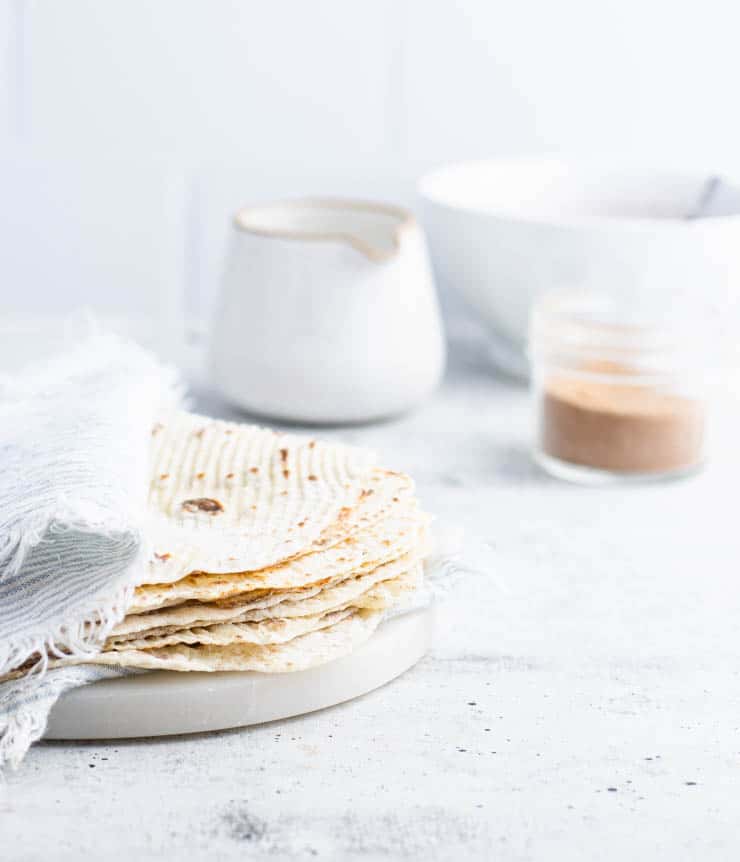
Disclaimer: Please note that some of the links below are affiliate links and I will earn a commission if you make a purchase using those links. I use all of the products included in this post and recommend them because they are products I personally love and trust. All affiliate links are clearly marked.
Growing up in a Norwegian American family, one of our favorite holiday traditions was gathering together to make lefse.
And few things can compare to the delicious buttery potato smell that emanates from your kitchen as each disc toasts to potato-y perfection.
If you're reading this, I imagine this is the kind of memory you have yourself and hold dear to your heart around this time of year.
Maybe you're here looking for some tips for rolling this delicate dough out like a pro or maybe you're looking for a recipe that mirrors the one you grew up with - which is why I'd be remiss to not mention that lefse isn't actually a uniform dish across all regions of Norway.
Having lived there for years, I was always amazed at the breadth of lefse types and how much they varied by region.
And with that in mind, I think it's important to note that what I'll be sharing with you today is my family's lefse recipe, a tynnlefse (thin lefse) recipe hailing from central Norway that uses fresh potatoes (potetlefse).
It's soft, buttery and the perfect mashed potato-forward vehicle for your favorite fillings.
Jump to:
What is lefse?
So, what is lefse? At its core, lefse is a soft Norwegian flatbread that comes in varying levels of thickness. It's traditionally made with flour, milk/cream, butter and sometimes potatoes, and cooked over a griddle.
While it resembles a tortilla in appearance, the taste is anything but; For the recipe we'll be making today, the flavor is warm, buttery and potato-y.
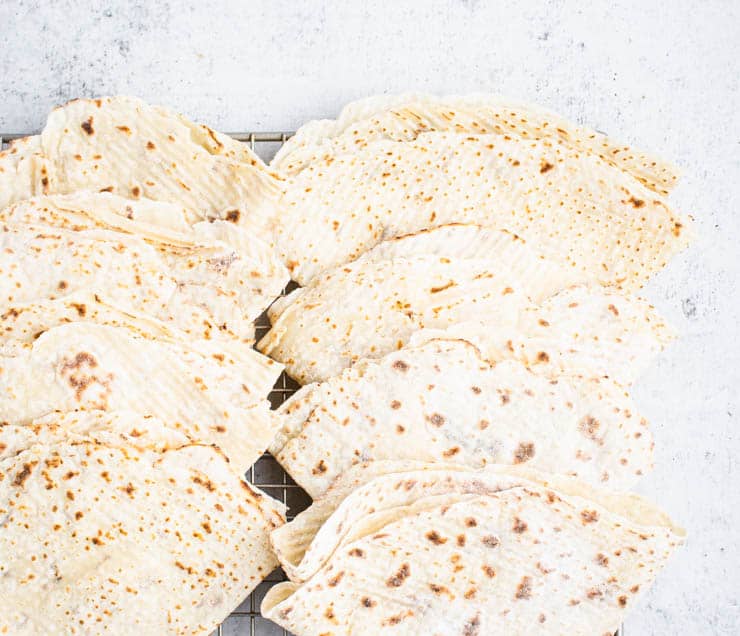
Equipment
The best lefse is made with lefse-making equipment. Here are the three pieces of equipment you'll need:
- Lefse griddle (affiliate): Lefse griddles are large, round, electric griddles that are just the right size and temperature for lefse. They come in both cast aluminum (traditional) and teflon finishes.
- Lefse rolling pin (affiliate): Traditional potato lefse rolling pins are corrugated, which helps roll the dough thinner.
- Lefse stick (affiliate): A lefse stick is a 1 - 1 ½" wide flat stick used for transferring lefse to and from a griddle and for turning them.
Equipment alternatives
Not in the market for new equipment or don't have the cabinet space? I hear ya! While I really do recommend getting the specialty equipment if you can (it really does produce better lefse), here are a few alternatives using items you likely already have:
- How to make lefse without a lefse griddle: In a pinch, I've used an electric griddle (affiliate) like the one in the link. While it gets warm enough and will cook the lefse just as well as a lefse griddle, you won't be able to roll your dough as large and will need to account for the size difference when dividing and rolling your dough.
- How to make lefse without a corrugated rolling pin: You could use a regular rolling pin for your dough, but be advised that can be more difficult to get your lefse as thin as it would be with a corrugated one.
- How to make lefse without a lefse stick: Any long, flat, approximately 1 - 1 ½" wide stick can stand in for a lefse stick. A clean, unused paint stirrer can work well, as can a wooden down or spoon handle.
Ingredients
Below are a few helpful tips for key ingredients. A full list of ingredients and their measurements is available in the recipe card.
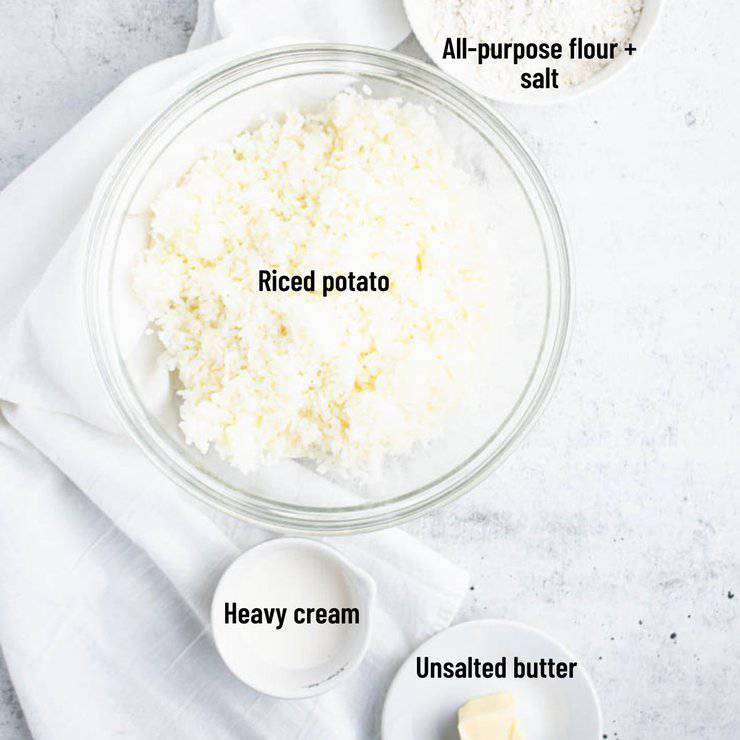
- Potatoes: Russet potatoes are the best potatoes for making this kind of lefse. For this recipe, you'll need about 3 medium russets.
- Butter: I recommend using unsalted butter as it allows us to control exactly how much salt we're adding. If you need to substitute with salted butter, omit the salt in the recipe.
- Flour: Helps bind the dough together.
- Heavy cream: Adds fat and flavor.
Watch the process
How to make lefse

Peel, slice and boil the potatoes. Rice the potatoes while still hot, measuring out three cups.
Add the butter and gently stir until melted.
Add the remaining ingredients and mix until a thick dough forms.

Divide the dough into 10 fist-sized balls and place on a kitchen towel-lined baking sheet (the towel will help absorb any moisture that comes out of the hot dough).
Cover with plastic wrap and refrigerate until cold (about 2 hours).
Tips for rolling out lefse dough
We'll be rolling out the dough in the next step, but before we get there, here are my best tips from decades of making lefse for this tricky part of the process:
- Wrap the cloth you're rolling the dough on around a cutting board to keep it taut.
- Use a rolling pin cover to keep the dough from sticking to the rolling pin. If you don't have a rolling pin cover, you can cut a leg off of a clean pair of tights and secure the ends around each handle with rubber bands. This DIY cover can be washed and reused.
- Don't roll your lefse out on the counter or a piece of parchment paper - a well-floured cloth really does work best.

Leaving the baking sheet in the refrigerator and working with just one ball of dough at a time, roll the dough out on a well-floured cloth using a corrugated rolling pin (affiliate link).
The lefse should roll out to approximately 10"-11".

Gently roll it around the lefse stick (affiliate link) and transfer it to the lefse griddle (affiliate link).
Cook at 450F for 1-2 minutes on each side. Transfer to a cooling rack and repeat with the remaining balls of dough.
Serving suggestions
Lefse is traditionally filled with a spread, rolled into a thin/narrow wrap and eaten warm or cold.
Because the dough is very soft, it won't crack when rolled or folded.
It can also be eaten with savory fillings (a not-so-traditional favorite in our household is a "Thanksgiving" wrap made of lefse, roasted turkey and cranberry sauce) like sliced meat, cured fish or cheese.
A few traditional fillings include:
- Buttered, sprinkled with cinnamon and sugar
- Jam (I personally like to use my small batch strawberry champagne jam)
- Sliced or melted brunost (Norwegian caramelized cheese)
- Smoked salmon
- Sausage (a smaller version of lefse called lompe is often used in place of hot dog buns)

Expert tips
- Wrap the cloth you're rolling the dough on around a cutting board to keep it taut.
- Use a rolling pin cover to keep the dough from sticking to the rolling pin.
- DIY rolling pin cover: If you don't have a rolling pin cover, you can cut a leg off of a clean pair of tights and secure the ends around each handle with rubber bands. This DIY cover can be washed and reused.
- Don't roll your lefse out on the counter or a piece of parchment paper - a well-floured cloth really does work best.
Storage
Lefse can be stored in an air-tight container in your refrigerator for up to a week or up to 6 months in the freezer. I like to fold mine into triangles for easy storage.
Common problems and how to fix them
Lefse that comes out tough is often a result of too much flour or overworking the dough. To avoid this, use only the amount of flour called for in the recipe, flour your work surface only as needed and mix the dough just until the ingredients are combined.
If your dough is falling apart, it's likely an indication that the dough has too much flour in it. If the dough falls apart during baking, it may be a sign that you're turning the lefse too early and it's not cooked enough to hold together.
Lefse dough by its very nature is a sticky dough. The right consistency dough will be slightly sticky, but should feel firm, hold it's shape when rolled and should roll out thin on a floured surface.
In addition to resulting in a tough dough, too much flour can also make your lefse dry.
More traditional Norwegian recipes
Interested in trying a few more traditional Norwegian recipes? Here are a few of my favorites:
Did you make this recipe? Please leave a ⭐ star rating and let me know how it went in the comments below! I regularly update these posts and feedback from wonderful readers like you help me make them better.
Recipe
Potato Lefse
This potato lefse tastes like childhood memories and Christmas time - Warm, buttery and perfect for savory and sweet spreads a like.
- Prep Time: 15 minutes
- Chill Time: 2 hours
- Cook Time: 2 minutes
- Total Time: 2 hours 17 minutes
- Yield: 10 1x
- Method: Baking
- Cuisine: Norwegian
Ingredients
- 3 cups potatoes, riced (about 3 medium russet potatoes)
- 1 tbsp unsalted butter, at room temperature
- 2 tbsp heavy cream
- 1 cup all purpose flour
- ¼ tsp salt
Instructions
- Peel and cut the potatoes into half inch thick slices.
- Boil until tender (about 10 minutes).
- Drain and rice the potatoes. Transfer three cups to a bowl.
- While hot, add the butter, stirring until melted.
- Add the remaining ingredients, mixing until a thick dough forms.
- Divide the dough into 10 balls.
- Place on a kitchen towel-lined baking sheet, cover and refrigerate until cold (about 2 hours).
- Working with one ball of dough at a time (leaving the others in the refrigerator), roll the dough out on a well-floured cloth using a corrugated rolling pin. Be sure to add flour as needed to keep the dough from sticking.
- Once the dough is rolled out as thin as it will go, roll it around the lefse pin and transfer it to the lefse griddle.
- Cook at 450F for about 1-2 minutes, or until brown spots appear.
- Flip and cook for another 1-2 minutes.
- Transfer the lefse to a kitchen towel-covered cooling rack.
- Repeat with remaining balls of lefse dough.
Notes
- Selecting potatoes: Russet potatoes are the best potatoes for making potatlefse. For this recipe, you'll need about 3 medium russets.
- Wrap the cloth you're rolling the dough on around a cutting board to keep it taut.
- Use a rolling pin cover to keep the dough from sticking to the rolling pin.
- DIY rolling pin cover: If you don't have a rolling pin cover, you can cut a leg off of a clean pair of tights and secure the ends around each handle with rubber bands. This DIY cover can be washed and reused.
- Don't roll your lefse out on the counter or a piece of parchment paper - a well-floured cloth really does work best.
- Storage: Lefse can be stored in an air tight container in your refrigerator for up to a week or up to 6 months in the freezer.
Nutrition
- Serving Size: 1 lefse
- Calories: 92
- Sugar: 0.6g
- Sodium: 62mg
- Fat: 2g
- Saturated Fat: 1.2g
- Carbohydrates: 16.4g
- Fiber: 1.6g
- Protein: 2g
- Cholesterol: 6mg
Keywords: lefse, lefse recipe, potato lefse, how to make lefse, norwegian lefse, homemade lefse, norsk lefse

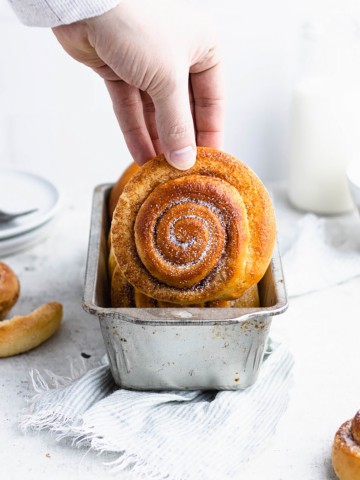
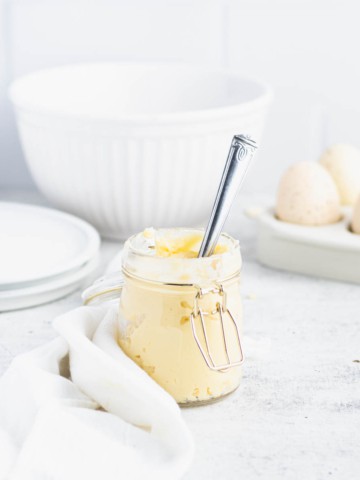
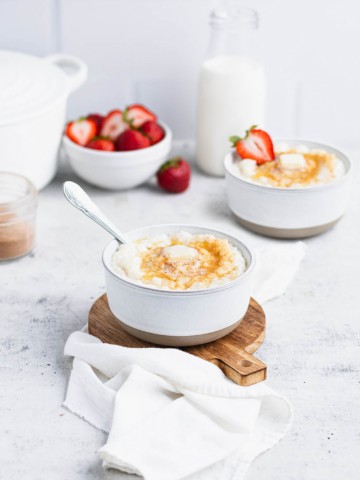
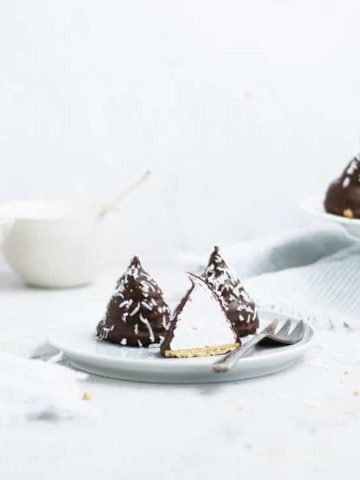
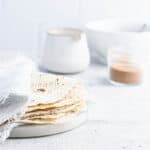

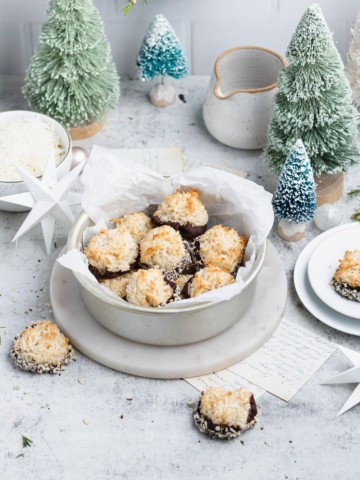
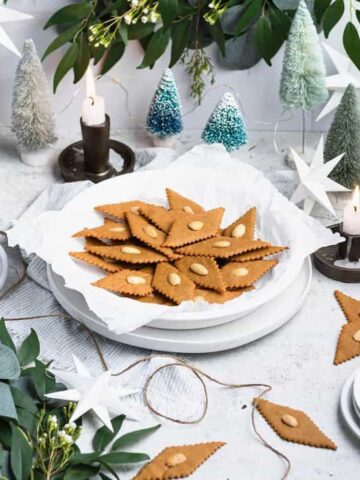
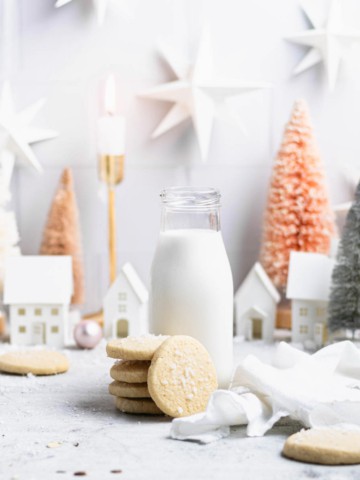
Sue says
This sure brings back memories 😀 Love it!!
★★★★★